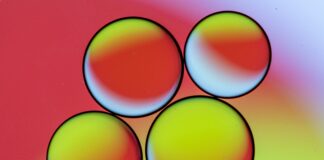The world of product design is experiencing a major transformation with the integration of artificial intelligence (AI). AI is revolutionizing product design by enabling designers to automate processes, create more personalized products, and optimize designs faster than ever before. As technology continues to advance, AI tools and techniques are becoming integral to the product design process, providing designers with innovative capabilities that were previously unimaginable. In this article, we’ll explore 10 game-changing facts about AI in product design, showcasing how this cutting-edge technology is reshaping the industry and opening up new possibilities for designers and businesses alike.
1. Accelerating the Design Process
AI-powered tools significantly speed up the product design process. Traditionally, product design was a lengthy and manual process involving numerous iterations and revisions. With AI, designers can automate repetitive tasks, such as generating design prototypes or making minor adjustments based on predetermined parameters. AI algorithms can also predict design outcomes, allowing for faster decision-making and more efficient design cycles.
This acceleration means that designers can focus more on creativity and strategic thinking rather than getting bogged down in technical tasks, ultimately leading to a more productive design process.
2. Enhancing Personalization and Customization
AI’s ability to analyze data and learn from user behavior enables designers to create highly personalized and customized products. With the help of AI, companies can gain insights into consumer preferences, habits, and needs. AI-driven product design tools allow designers to tailor products to individual customer preferences, ensuring that each design resonates with its target audience.
Personalized designs can also extend to the packaging and marketing materials associated with a product, ensuring a consistent and unique experience for the customer from start to finish. This level of personalization fosters stronger customer loyalty and satisfaction.
3. Predicting Market Trends
AI in product design goes beyond just personalizing products; it can also help predict market trends. By analyzing vast amounts of data, AI can identify emerging trends, shifts in consumer preferences, and changes in the market landscape. This data-driven approach empowers product designers to make informed decisions, ensuring that the products they create will meet market demands.
AI’s predictive capabilities give businesses a competitive edge by allowing them to stay ahead of trends and launch products that align with consumer expectations, minimizing the risk of market failure.
4. Improving Design Accuracy
Accuracy is a crucial aspect of product design, and AI plays a pivotal role in enhancing it. AI algorithms can analyze design specifications and ensure that every component is precise, minimizing human error. Whether it’s the dimensions of a product or the alignment of individual parts, AI can detect discrepancies and suggest corrections.
Additionally, AI-powered tools can simulate various conditions and stress tests, allowing designers to see how a product will perform in real-world scenarios. This level of accuracy reduces the likelihood of costly mistakes and ensures that the final product meets all necessary standards.
5. AI-Driven Prototyping
AI has revolutionized the prototyping phase of product design. Traditionally, prototyping was a labor-intensive process that involved multiple iterations and testing. With AI, designers can create digital prototypes quickly and efficiently. AI tools can generate design simulations and 3D models, enabling designers to visualize how a product will look and function before physical production.
AI-driven prototyping also allows for virtual testing and feedback, helping to identify potential issues early on and make adjustments before investing in expensive prototypes. This results in cost savings and a more refined final product.
6. Optimizing User Experience
User experience (UX) plays a central role in product design, and AI helps designers optimize this aspect by providing valuable insights into user behavior. AI can track how users interact with a product, whether it’s through website navigation, app usage, or product interactions, and use this data to inform design decisions.
By leveraging AI, designers can create products that are not only functional but also intuitive and user-friendly. AI algorithms can predict pain points in the user journey and suggest improvements, resulting in products that deliver seamless, satisfying experiences for customers.
7. Automating Repetitive Tasks
One of the biggest advantages of integrating AI into product design is the ability to automate repetitive and time-consuming tasks. Tasks such as resizing images, adjusting layouts, or generating design templates can be automated with AI, freeing up designers to focus on more strategic and creative aspects of the design process.
Automation of these tasks enhances productivity, reduces the likelihood of errors, and enables designers to meet deadlines faster while maintaining high-quality standards.
8. AI-Powered Materials and Manufacturing
AI is also transforming how products are manufactured by optimizing material choices and manufacturing processes. AI can predict the most efficient materials to use based on factors such as durability, cost, and environmental impact. Additionally, AI algorithms can optimize the manufacturing process, identifying ways to reduce waste and improve efficiency.
For product design, this means that products can be created with greater precision and sustainability, all while lowering production costs. The use of AI-powered materials and manufacturing processes is essential for businesses looking to create innovative and eco-friendly products.
9. Enhancing Collaboration in Design Teams
AI can enhance collaboration between team members working on product design projects. By integrating AI tools into the design workflow, team members can share data, access real-time updates, and collaborate on designs more efficiently. AI can also analyze team performance, identifying areas for improvement and ensuring that each member is contributing effectively.
This collaborative environment fosters creativity and innovation, as AI-powered tools help streamline communication and coordination, enabling teams to work together seamlessly and produce better outcomes.
10. Ethical and Sustainable Design
AI is helping designers create more ethical and sustainable products by providing insights into environmental impact, material sourcing, and social considerations. AI algorithms can help design products that are environmentally friendly, using sustainable materials and minimizing waste during the manufacturing process.
Additionally, AI can help companies adhere to ethical design principles by identifying potential risks related to labor practices, supply chains, and product sourcing. By prioritizing sustainability and ethical considerations, AI in product design enables businesses to create products that align with growing consumer demand for eco-conscious and socially responsible products.
Conclusion
AI has truly transformed the landscape of product design, offering designers a wealth of tools and capabilities that enhance creativity, efficiency, and accuracy. From improving the user experience to optimizing prototyping and predicting market trends, AI is shaping the future of product design in profound ways. As businesses and designers continue to embrace AI, we can expect even more innovative solutions that will push the boundaries of what’s possible in product design. By integrating AI, companies can create smarter, more personalized products that meet the ever-evolving needs of consumers and stay ahead of the competition.














